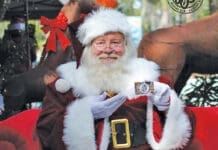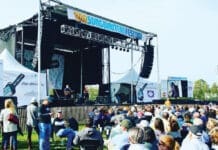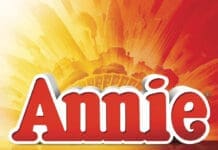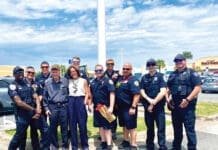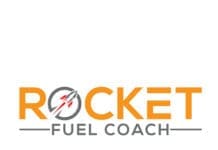 By Lisa Leath Turpin, Health & Fitness Coach/Consultant
By Lisa Leath Turpin, Health & Fitness Coach/Consultant
Happy to introduce the second in a series of tips to effectively and safely exercise various areas of the body (Check out June edition: “Core/Abs”).
There is a lot going on in the lower body. That old song (hip bone’s connected to the thigh bone…) is true; everything is connected and can affect the entire chain of movement. To stay healthy, you must look at balancing your muscle groups to avoid imbalance that leads to weakness and injuries. Importantly, acknowledge that some muscles are meant to be stronger due to their function, so weight load for your exercises should reflect that.
The lower body muscles work synergistically and only a couple can be isolated. The gluteals (butt), quadriceps (front thigh), hamstrings (back thigh), calves (back lower leg), abductors (outer thigh) and adductors (inner thigh) all comprise the lower body.
A squat is a prime example where all the muscles are incorporated, and a very functional movement for everyday life. Squat safety – bend at the knees (knees must bend for proper ROM: Range-of-Motion), sit back on heels, lower butt down, chest and head up, drive your heels into the floor to push up to standing. The toes are for balance so, to protect the knees, use them lightly. Work on getting deeper to get stronger through the entire ROM.
To address knee issues, start light, assist your weight by holding on to something if you haven’t been training. Track your knees in the direction your toes are pointed to keep them aligned. Butt is always way lower than your chest! Knees never move forward past the toes. Squats help you remain self-sufficient for getting yourself up and down.
Your knees will get stronger if you progress through consistency with ROM & safety. Babying them will make them weaker. Plus, bending and weight bearing the knees will produce synovial fluid to lubricate the joint.
Variations – Basic squat, heels are shoulder width apart, toes and knees slightly turned out to 11 and 1 o’clock. Focus on gluteus maximus and quadriceps, some hamstrings. Wide squat, heels are outside of shoulder width, toes and knees are pointed roughly 10 and 2 o’clock (key, start your turnout at the hip joint so that thigh, knee, shin and toes are all pointed outwardly the same). Focus on gluteus medius, quadriceps, adductors, some abductors.
Close Stance squat, (i.e. back squat), toes face forward, feet close together, sit back almost like you are going to fall back. In yoga, some go all the way to the floor (Malasana). Focus mainly on center quads and glutes.
Protecting our knees is very important because they are vulnerable in all lower body exercises. Imbalanced muscles, where a muscle is strong but the opposite muscle is weak, can be detrimental to any joint. For a balanced lower body workout, think of working around the whole circumference of the leg.
Quads and Hamstrings should be equally conditioned, which doesn’t mean they have to lift the same weight. Hamstrings perform more isolated movements. They can move independently of the rest of the lower body. Named the biceps femoris, it flexes the knee joint the same as the biceps in the arm. But quad exercises, such as the squat, are assisted by the glutes, making them a true powerhouse. But the key is to give them equal workout attention. Don’t forget the leg extension. Also an isolated move targeting one of the quad muscles, done properly it will make a huge difference in knee stability and thigh shape.
Abductors and Adductors are knee and hip stabilizers. Exercises that move the legs out or in (leg lifts or band work) are what you do to strengthen those. Throw in your calf raises on your bottom stair and you will be complete from hip to toe!!
Have questions? Join my class at Destin Health & Fitness or write: BeActive850@gmail.com.
Lisa Leath Turpin is a degreed and certified health and fitness lifestyle coach and consultant who has devoted her life to motivating and strengthening the body and mind of others. With over 20 years’ experience, Lisa has a B.S. degree in Sports & Fitness Management from the University of Alabama, developed and managed the U.S. Army Corps of Engineers’ Health & Wellness Facility and programs in Huntsville, Ala., is board certified by the National Board of Fitness Examiners and possesses certifications from AFAA, Polestar/Balanced Body, Reebok U, SCW Fitness and American Heart Association. She is currently a group exercise leader at Destin Health & Fitness and an independent personal trainer in the Destin area, diversely and extensively trained in classical and modern Pilates, lifestyle management, personal training, group exercise and post-rehabilitation. Have a fitness question for Lisa? Email BeActive850@gmail.com.





